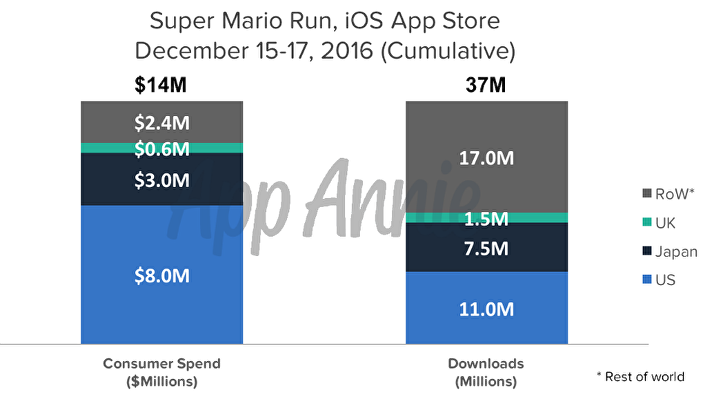Nintendo fans everywhere anxiously awaited the release of the Super Mario Run mobile phone game after the huge success of the Pokémon GO! game almost a year ago. Since Niantic Labs was the company that developed Pokémon GO!, Super Mario Run would be the first mobile phone game created solely by the Japanese gaming company. Nintendo has had a lock on the handheld gaming scene since the advent of the GameBoy, so it seemed only natural that they would enter the mobile gaming scene eventually. However, it seems that for many hopeful gamers, Super Mario Run did not live up to the expectations.
Super Mario Run seemed to hit the mark
Super Mario Run was released for the iPhone in December 2016 and later came out for Android towards the end of March in 2017. In the wake of Pokémon GO!’s success, there was a lot of anticipation for the game. As a newcomer to the mobile app scene, Nintendo sought to defy expectations of a phone game, ultimately taking a big risk. Many wondered if Nintendo would be able to translate the Mario franchise into a mobile phone game. Nintendo seemed to hit the mark when it came to creating a user friendly game: the gameplay was true to the franchise, the controls were easy to learn, and you can play with one hand. As far as a good mobile phone game goes, Super Mario Run seemed like a successful idea.
So then what went wrong?
According to comments in the Apple App Store, the Mario fan base seemed to be fairly split on the game. According to App Annie, the game received 37 million downloads and generated $14 million in revenue in the first three days after its release. Ultimately, the game did not meet Nintendo projections for downloads or total revenue. While many users were pleased with the game and didn’t mind paying the somewhat hefty price for the app, many users pointed out issues with the app, including the game’s need for a constant online connection, even for single-player modes.
After the release of the new iPhone game, news outlets everywhere announced that Nintendo shares were falling due to the game’s perceived failure. Many cited the payment model for the game as a main reason for its failure. In all the discussions regarding the perceived failure of Super Mario Run, the price and the online requirement, not the game itself, seem to be the two main reasons behind customer dissatisfaction with the game.
Is $9.99 too expensive for a mobile phone game?
Most mobile phone games, including Pokémon GO!, rely on in-app purchases to continue creating revenue as the user continues to play the game. While the game itself is free, Super Mario Run relies on a one-time purchase of $9.99 to unlock all the entire game. While this might seem like a steep purchase for a mobile phone game, once the one-time payment is made, there are no other in-app purchases. Still, this eliminates the game’s ability to continue generating revenue, meaning that the majority of the money brought in by the game would come in early on after the game’s release.
The reasoning behind this decision seems to be that the one-time purchase would guarantee a certain amount of revenue, at least from users who make the choice to pay. However, the main success behind mobile phone games relies on their ability to slowly draw revenue from users one dollar at a time. Many users did not see the appeal in a $9.99 for a game with limited content, especially since Nintendo doesn’t seem to have plans to release new content any time soon.
Was it a failure or a success?
Ultimately, it seems that the game itself was successful in the graphics and gameplay, however, it seems that the two main faults cited by users: the price and the online requirement. It seems that the game was successful in terms of the app itself, but the price to content ratio and the constant need for internet or data usage were enough to dampen the sales. Nintendo has always sought to break the mold with their products (so maybe they should have innovated with how the online requirement was used, or in payment methods), which has both failed them and served them well in the past. It seems that this time, it may not have paid off as well as they had planned. Though the game was well-crafted, it does not seem that it was a successful business endeavor for Nintendo.
Though, this is the first game Nintendo have made for mobile devices, so maybe future games will improve on the aspects where Super Mario Run faltered. Nintendo have always managed to bring hosts of fun to their games, so maybe they can bring fun to paying for them too?








Published: Apr 6, 2017 07:56 pm